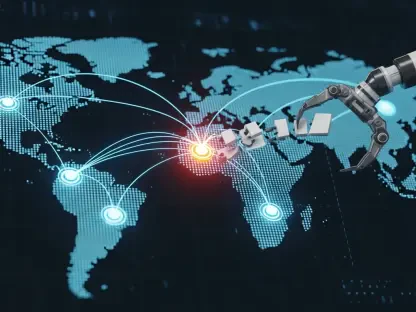Digital landscapes have seen exponential growth, bringing with them a persistent issue: password vulnerabilities leading to massive data breaches. Such threats have escalated to unprecedented levels, with disturbing statistics revealing 16 billion compromised passwords. This immense collection, sourced from various compromised databases and logs, includes critical data from major organizations like Google and Apple. As password reuse remains alarmingly high among users, representing a significant vector for cyberattacks, there is an urgent need for improved cybersecurity measures. Amidst this backdrop, passwordless authentication has emerged as a promising alternative, aiming to curb the reliance on traditional passwords and enhance security. This article explores the current trends, real-world applications, and future implications of passwordless authentication.
Rising Adoption of Passwordless Authentication
Data and Trends in Passwordless Solutions
Passwordless technology has rapidly gained traction, driven by the need to address the vulnerabilities inherent in password-based systems. Adoption rates continue to rise, with more companies and users gravitating toward these advanced solutions. Statistically, the industry is witnessing exponential growth, signaling a strong market acceptance. Credible reports indicate a substantial increase in organizations embracing this technology, highlighting a shift in the cybersecurity paradigm. This movement is largely influenced by the economic toll of data breaches, which average a substantial financial burden.
Real-World Applications and Innovations
The landscape of passwordless authentication is adorned with innovative applications and companies leading the charge. Businesses such as Microsoft and Google have introduced pioneering products aimed at eliminating password dependencies. These initiatives are setting industry standards and demonstrating practicality through successful implementations. Case studies reveal that adopting passwordless solutions not only enhances security but also streamlines user experiences. For instance, companies implementing such solutions have reported reduced breach incidents and increased customer trust, showcasing the tangible impact on organizational security frameworks.
Insights from Industry Leaders
Industry leaders in cybersecurity are vocal about the advantages and challenges of moving away from passwords. Experts consistently highlight the improved security posture afforded by passwordless authentication. The shift addresses concerns about brute-force attacks by eliminating the attack vector entirely. However, professionals also acknowledge challenges, such as the transition phase and the need for widespread user education. The multifaceted viewpoints of these leaders emphasize that while the road ahead is promising, it requires careful navigation and strategic deployment.
The Future of Passwordless Authentication
The trajectory of passwordless authentication is poised for significant advancements. Innovations in related technologies such as biometrics and cryptography are expected to redefine security protocols. These advancements promise to deliver enhanced privacy, reduced friction in user experiences, and a more resilient defense against cyber threats. Nonetheless, challenges remain, particularly in scaling these solutions across diverse platforms and user bases. The potential benefits of a passwordless future are vast, from improved security measures to streamlined digital interactions, although it demands concerted efforts from stakeholders to realize its full potential.
Conclusion and Call to Action
Passwordless authentication represents a pivotal shift in addressing the persistent vulnerabilities associated with traditional passwords. The insights and case studies discussed illustrate a transformative trend with the potential to reshape cybersecurity landscapes. While challenges exist, the commitment to adopting passwordless technologies signifies a crucial step toward enhancing security measures. In the future, embracing these technologies could lead to substantial advancements in safeguarding digital assets against the relentless threat of cyberattacks. Moving forward, strategic efforts are essential to overcome existing obstacles, ensuring a secure and seamless digital environment for all users.









